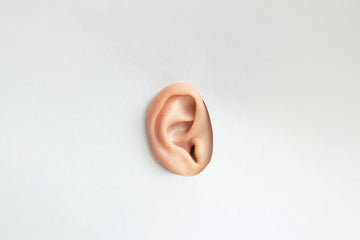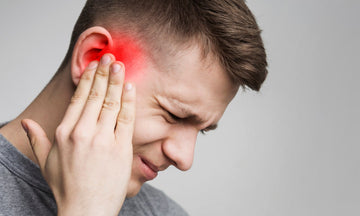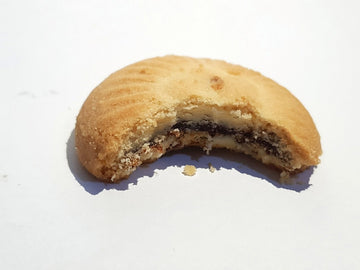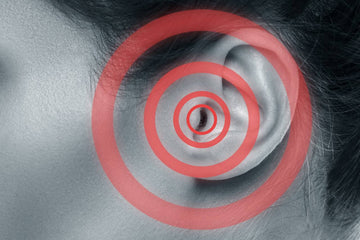How to Clean Ears: Dos and Don'ts for Optimal Ear Health
by Hear Clear on Dec 13, 2023

While it’s often a neglected area of our bodies, our ears still do need to be cleaned from time to time - but many of us are doing it wrong! While movies may have normalised the idea of sticking a cotton bud in your ear and hoping for the best, it’s actually a counterproductive method; cotton buds can push wax further into your ear, which can often lead to uncomfortable or even painful ear blockages.
And while the cotton bud method isn’t exactly the best one, it’s still important to keep your ears clean if you’re experiencing blockages or irritation. Earwax - also known as cerumen - is a natural substance produced to protect the ear from dust, bacteria, and other foreign particles, and while it does have a function, excessive earwax can lead to discomfort, hearing loss, or even infection. So, how to clean your ears properly? Let’s take a look.
The Dos of Proper Ear Cleaning
Clean the Outer Ear Gently
Rather than opting for a cotton bud, instead use a damp cloth to wipe the outer part of the ear; this removes any excess wax or dirt without pushing it further into the ear canal. Make sure you’re not reusing the same side when cleaning both ears - this just moves dirt and wax from one ear to the other!
Use Ear Drops
If you have buildup in your ears, over-the-counter ear drops can soften hard wax, which helps by making it easier to remove naturally. Apply the drops as directed, and allow the softened wax to exit the ear naturally.
Consider Ear Irrigation
If your wax buildup is significant, an ear irrigation might be necessary to clear it out. That being said, this should only ever be done by a doctor or a healthcare professional, to ensure you’re not damaging the ear.
Stay Hydrated
It’s a classic one, but always drink plenty of water, especially if you have an ear wax problem. Hydration helps maintain the normal consistency of your earwax, and in turn prevents it from becoming too hard and difficult to get rid of.
Understand Your Ear’s Natural Cleaning Process
Finally, don’t forget that the ear has its own self-cleaning mechanism: when we chew and move the jaw, this helps to move old earwax out of the canal to the ear opening naturally. So don’t overclean and end up damaging the ears themselves - let your body work its magic on its own.
The Don'ts of Ear Cleaning
Avoid Cotton Swabs in the Ear Canal
As we mentioned already, avoid inserting anything into the ear canal, including cotton buds; these can push wax deeper, causing blockages or damage to the eardrum.
Don't Over-Clean
Over-cleaning can strip the ear of its natural oils, leading to dryness and irritation, so make sure you understand how often you should clean your ears. Generally speaking, you only need to clean your ears if wax buildup is causing irritation.
Don't Ignore Pain or Discomfort
If cleaning your ears causes pain, discomfort, or hearing loss, stop immediately and consult a healthcare professional - you may have an infection or a damaged eardrum.
Avoid Home Remedies Without Research
Some home remedies for ear cleaning can be harmful, so always do thorough research and ideally consult a professional before trying new methods.
Choosing the Right Tools for Ear Cleaning

Given that there are skincare and body tools for almost every area of our body, there’s surely something for our ears, right? While the answer is yes, for most people a simple regimen of outer ear cleaning with a damp cloth and occasional use of ear drops for wax softening is sufficient. In fact, we’d recommend avoiding tools that are invasive or could potentially harm the delicate structures inside the ear.
If earwax buildup is a recurring issue, you could consider tools like bulb syringes or wax removal drops, but only after consulting with your GP or an ear specialist. And if you have hearing aids - even small hidden hearing aids - you’ll want to make sure you’re buying tools adapted to clean these too.
Don’t forget that the goal of ear cleaning is not to remove all earwax (your ears need it!) but to maintain cleanliness and comfort while allowing the ear to perform its natural functions.
When to Seek Professional Help
In some cases, home methods may not be sufficient to clean your ears properly, especially if there's excessive or impacted earwax that’s causing you pain. Signs that you should seek professional help include:
- Persistent discomfort or pain in the ear
- Hearing loss or a feeling of fullness in the ear
- Any discharge or bleeding from the ear
- If you have a history of ear problems or surgeries
Types of Cleaning Accessories for Hearing Aid Users
As we mentioned above, cleaning your hearing aids regularly is also important if you wear your device regularly. Here are some ear cleaning tools and methods for hearing aids to consider:
Wax Guards
These small filters prevent wax from entering and damaging the hearing aid, but note that they need to be checked and replaced regularly.
Soft Brushes
Soft brushes can be used to gently clean the microphone ports and other parts of the hearing aid without causing damage.
Hearing Aid Cleaning Kits
Hearing Aid Cleaning Kits - such as those we offer at Hear Clear - include enough cleaning tools for daily maintenance of your device, so you can keep your hearing aids in tip top condition all year round.
Final Thoughts
Overall, understanding how to clean your ears properly is key for maintaining optimal ear health, especially if you struggle with wax buildup. And if you don’t have earwax issues, remember that ears are self-cleaning organs: more often than not, less interference is the best way to keep them in good condition.




